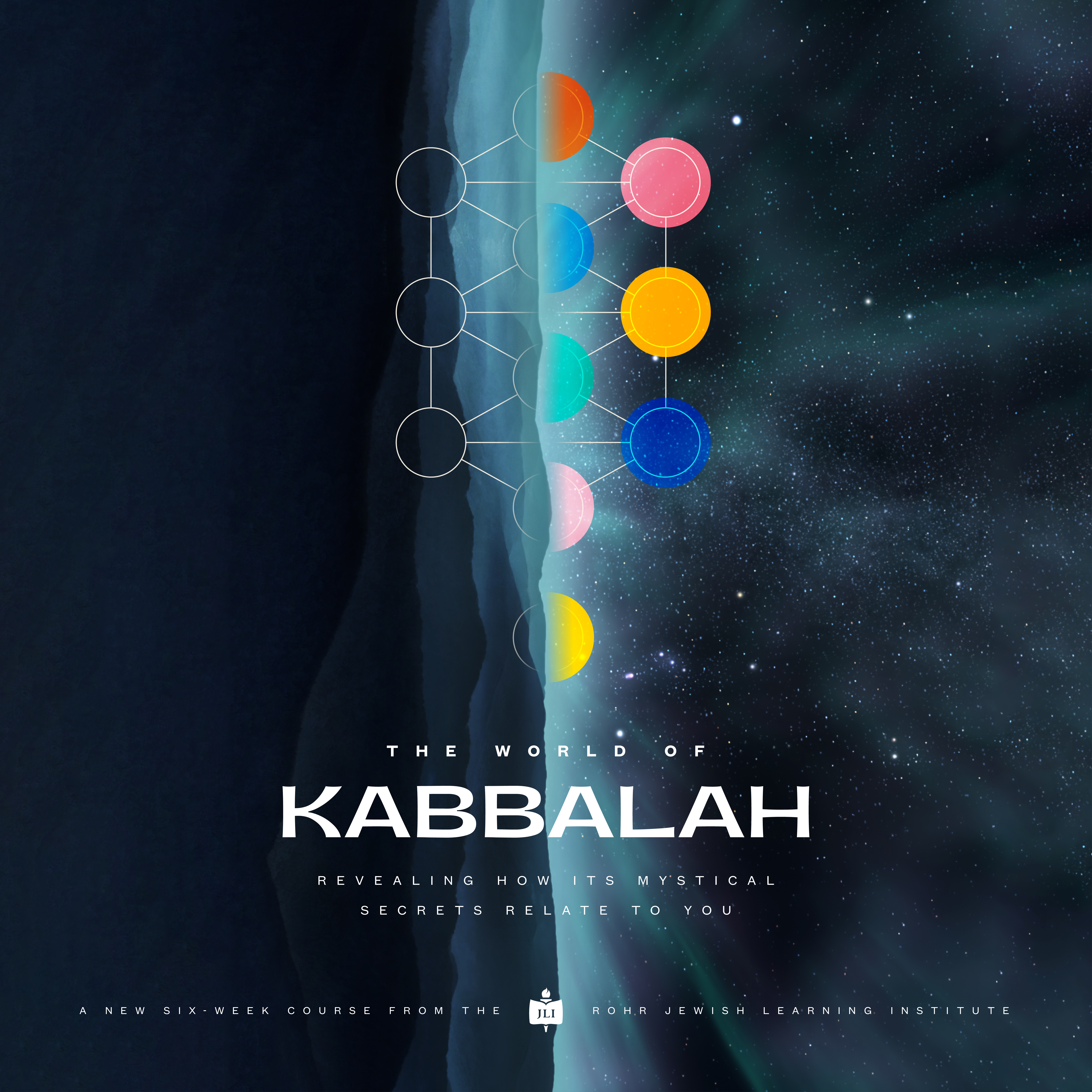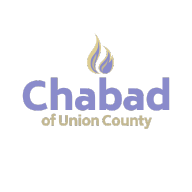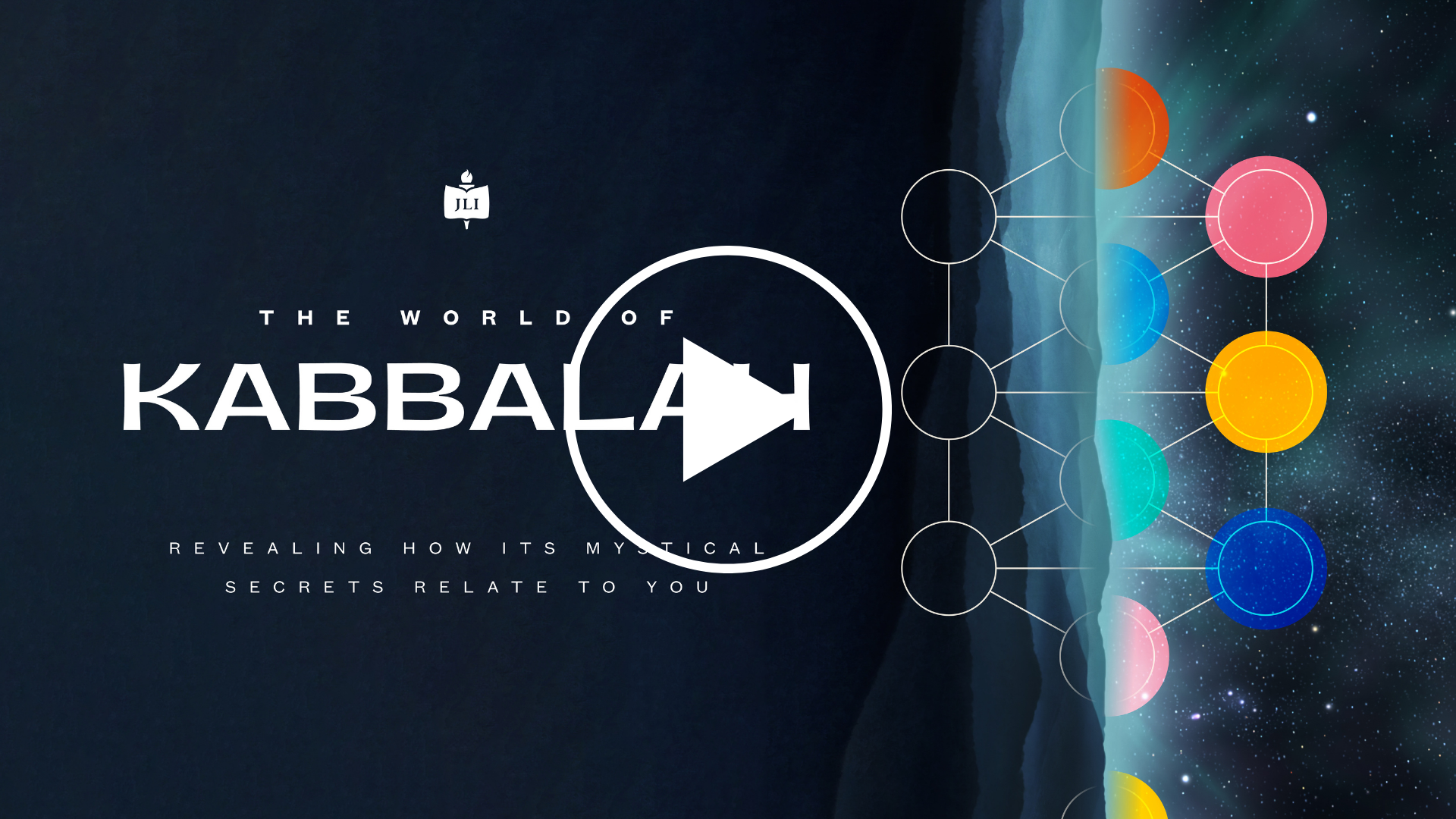
6 Wednesdays, November 1st - December 6th
7:30-9:00 PM
Instructor: Rabbi Avrohom Blesofsky
Location: Chabad of Union County, 1400 Martine Ave, Scotch Plains
Fee: $99
Course Overview
The World of Kabbalah
Course through Judaism’s Most Important Titles, and the Authors Who Inscribed Them
Discover the core mystical and spiritual teachings of Kabbalah and their relevance to everyday life. You’ll learn to think like a Jewish mystic and gain powerful insights to fuel deeper self-understanding and personal growth. Curious why there’s so much buzz around Kabbalah? Discover it for yourself by attending The World of Kabbalah.
Lesson Outline

— 01
The Evolution of Ego
This lesson provides a general introduction to seder hishtalshelus and demonstrates how this lofty system is also reflected within the human being. We then begin the journey by exploring the three worlds of Beriah, Yetzirah, and Asiyah (BiYA) and then discover these three worlds in our three levushim of thought, speech, and action. We learn that humans can and should have spiritual experiences reminiscent of the higher worlds, but the real takeaway is to enhance how we live through our levushim.*
We learn that just as BiYA senses itself as outside G-dliness, the three levushim are separate from a person’s nefesh. This means we can wield control over these areas of life—even our thoughts—irrespective of what’s happening within the nefesh. We then learn from the order of BiYA that we need to make decisions in life following this model: thought, consultation (speech), and action—avoiding the common tendency to get stuck in any one of these zones or the bias to skip one of them. Finally, we learn how to begin each day with a threestep meditative exercise that walks us through these three worlds, empowering us to live each day with spiritual focus.

— 02
The Dawn of Limitation
While the previous lesson discussed the three worlds of yeshus, this lesson transitions into the zone of Elokus, exploring the nature and purpose of the ten sefiros. We understand that, on the one hand, the sefiros are Elokus, but simultaneously, as entities of limitation, they represent a significant descent relative to beli gevul. This descent was necessary for Hashem to create the limited world that we inhabit. We dedicate our attention to exploring three of the ten sefiros—chesed, gevurah, and tiferes—and to discovering elements within existence that reflect these traits.
Turning to the human soul, knowing that our neshamah stems from Atzilus reminds us about our inner tehora hi, that no matter where we go, we remain pure at the core. This empowers us to keep on with our mission of bringing purity to the world around us. More specifically, each person’s neshamah has a root in a particular sefirah, which can be determined by looking at a person’s character. This way, we learn about our soul’s origins and gain crucial information about our unique mission. And yet, because we all have ten sefiros within us, we can reveal any sefirah, which empowers us to improve in areas of weaknesses.

— 03
The Infinite Light
Whereas the previous lesson kept us in the zone of limitation—albeit Elokus—the current lesson pushes us upward to Hashem’s infinity. We learn that the famous kadosh, kadosh line from our prayers comes from the angels in Beriah. These angelic beings sense G-d’s infinity and passionately desire to relate to it, rather than sufficing with the default limited manifestation in their world. This serves as a model for us: learning about the or ein sof implies that we accept G-d for Who He is rather than only relating to Him as He fits into our narrow world. We then turn to see how or ein sof plays a crucial role in seder hishtalshelus, enabling the intermingling and collaboration of the sefiros.
This topic is also relevant to our souls, for the souls of a husband and wife can only unite in marriage because they, too, feel this transcendent light that is beyond their differences. This is a model for a couple to employ in their marriage, allowing the soul merger on the inside to be expressed in their daily interactions. We then turn to the power of infinity within the
person—the power of ratzon. We learn that nothing stands in the way of desire and that learning to develop a desire for a particular goal is a prerequisite for success.

— 04
The World of Chaos
There were two manifestations of G-d’s sefiros—the second one is Atzilus, discussed in
Lesson Two, but before that was the revelation of Tohu, a world of chaos that resulted in
the “breaking of vessels.” To comprehend the meaning of this enigmatic topic, we learn
about oros and kelim. We eventually reach the understanding that G-d manifested Tohu
in such a manner that its sefiros were not in tune with G-d’s ultimate plan. As a result, the
oros and kelim didn’t fulfill their mission, resulting in the oros returning to their source and
the kelim becoming mighty forces of opposition in BiYA.
This duality plays out in our lives as well. Until this lesson, we have been discussing only
one soul. This lesson unveils that we possess two souls, which is why we are such conflicted
beings. Why do we have two souls? The Divine soul flows from Atzilus, but the animal soul
stems from Tohu. Our task is to rectify Tohu by training and sublimating the animal soul,
filling it with light and spiritual direction.

— 05
The Great Concealment
This lesson addresses how G-d transitioned from a state of simple infinity to a state of bearing defined and limited attributes. This brings us to explore the tzimtzum, the first concealment. Studying the example of the master and students helps us appreciate what the tzimtzum is and how it operates; it also helps us understand what it is not—that it doesn’t constitute G-d removing Himself but merely concealing Himself. The lesson also discussed a second crucial concealment: the parsa between Atzilus and BiYA that enabled the transition from a Divine identity to an identity of yeshus.
Applying this to our lives, we learn that humans need to employ a personal tzimtzum on our egos to allow space for other people to operate around us and to invite G-d into our lives. We then turn to the pattern of the tzimtzum to derive an empowering lesson: the very beginning of existence was darkness (tzimtzum), with light (the kav) only following the darkness. This pattern trickles through the entire system, down to how this physical world operates. It teaches us that a dark personal battle is but a step toward discovering success and blessing.

— 06
The Essence of Everything
This lesson addresses how G-d transitioned from a state of simple infinity to a state of bearing defined and limited attributes. This brings us to explore the tzimtzum, the first concealment. Studying the example of the master and students helps us appreciate what the tzimtzum is and how it operates; it also helps us understand what it is not—that it doesn’t constitute G-d removing Himself but merely concealing Himself. The lesson also discussed a second crucial concealment: the parsa between Atzilus and BiYA that enabled the transition from a Divine identity to an identity of yeshus.
Applying this to our lives, we learn that humans need to employ a personal tzimtzum on our egos to allow space for other people to operate around us and to invite G-d into our lives. We then turn to the pattern of the tzimtzum to derive an empowering lesson: the very beginning of existence was darkness (tzimtzum), with light (the kav) only following the darkness. This pattern trickles through the entire system, down to how this physical world operates. It teaches us that a dark personal battle is but a step toward discovering success and blessing.
Chabad Of Union County
Scotch Plains, NJ 07076
United States
| Options | |
| 4-week Course | $100.00 |
| First class free trial | $0.00 |

